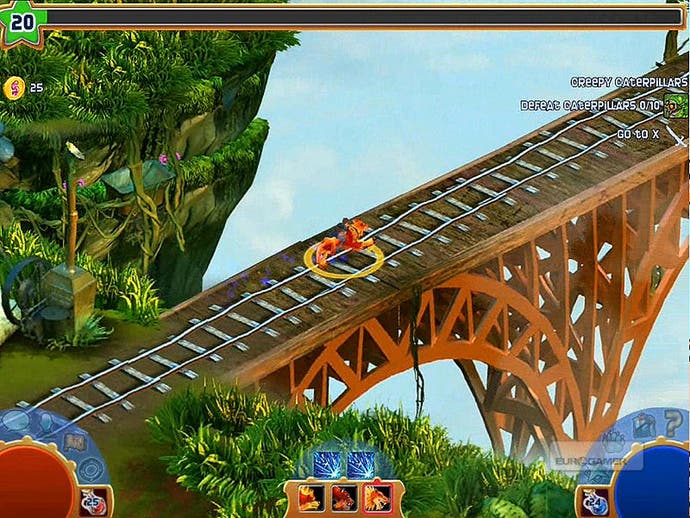Funcom's SweetRobot
MMOs for kids?
Norwegian developer Funcom usually makes games like The Longest Journey, Anarchy Online, Age of Conan and The Secret World; worlds for adults, not kids. Not, at least, until now. Because today Funcom unveiled SweetRobot, a subsidiary company set up expressly to make MMOs for a "younger audience". The first of these will be Pets vs. Monsters, a game where heroes collect, nurture and fight alongside pets. It's a bit Pokemon, but blended with a Diablo-like RPG world of loot and exploration.
It's an interesting twist for veteran developer Funcom, and one that may have wider ramifications not only for the Norwegian studio but also for the MMO industry as a whole. To find out what's afoot we sat down with Pets vs. Monsters producer Jon Wright for a chat.
What it means it that the genre isn't what it was. The genre 10 years ago was made up of a niche personality. And now what we're seeing, due in a large part to World of Warcraft, is that the MMO market is now very broad. Funcom is just responding to this.
With Pets vs. Monsters we're focus-testing with kids around the age of four and we're play-testing around the office with people in their forties and beyond. And we're finding that the game works well across all of those age groups. Obviously it's hard to make something that works through from four to 40 but there is a lot of crossover.

Well we do usability testing so we don't ask them for feedback directly. We video the face of the child playing the game and we video the screen and then we composite those together. The feedback we get from a four-year-old is: confused expression, happy expression and annoyed expression. We don't even bother to ask them questions because they'll just lie for chocolate. With eight-year-olds and 10-year-olds we do do interviews afterwards to try and glean some more information.
There's really been a much stronger focus on testing. It very quickly becomes the case that we cannot judge our own game and approach it from the perspective of someone that's never played an MMO before. It's very hard for us as older developers and older game players to judge this.
Certainly when the project started it felt very much like an experiment. And then as we've continued to have success, the project's profile has raised within the company. We've just released the game internally and there's been a lot of positive responses. As time goes by it becomes more and more high profile.

Accessibility. We do understand that someone who loves MMOs enough to be working at Funcom probably isn't the target audience for this game, ha ha. But they're loving the simplicity of it. We've tried very hard not to have a tutorial at the start, as a lot of games aimed at young kids try to live with complexity by putting a heavy tutorial at the start. This is something we've tried to avoid. They're enjoying the pick-up and play element; you start the game and you're immediately in conflict, you're defeating a monster.
The other thing we've had to do - again enforced by the kids - is rather than have five hours of the same beautiful mountain range... We found that the kids turn off, and they turn off within half an hour. One of the things PVM does is every half-an-hour you'll move through play areas and they will feel completely different. So our developers also enjoy the variety.
We started with that age-range but found it actually works a lot younger. So we've been challenging ourselves to make it accessible down to six. And we've had some success even down to four, although they're exceptions rather than the rule. We want to keep it as young as possible without alienating the older audience.

